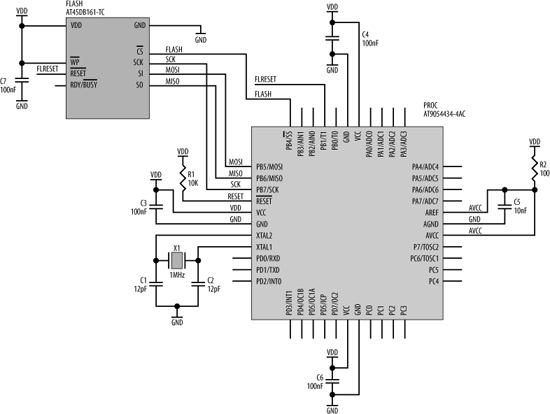Bus Interfacing
In this section, I'll show you how to expand the capabilities of your processor by interfacing it to bus-based memories and peripherals. Different processor architectures have different signals and different timing, but once you understand one, the basic principles can be applied to all. Since most small microcontrollers don't have external buses, the choice is very limited. We'll look at the one, and only, AVR with an external busâthe AT90S8515. In the PIC world, the PIC17C44 is capable of bus-based interfacing.

Figure 15-11. A 2M DataFlash interfaced to an AT90S4434
AT90S8515 Memory Cycle
A memory cycle (also known as a machine cycle or processor cycle ) is defined as the period of time it takes for a processor to initiate an access to memory (or peripheral), perform the transfer, and terminate the access. The memory cycle generated by a processor is usually of a fixed period of time (or multiples of a given period) and may take several (processor) clock cycles to complete.
Memory cycles usually fall into two categories: the read cycle and the write cycle . The memory or device that is being accessed requires that the data is held valid for a given period after it has been selected and after a read or write cycle has been identified. This places constraints on the system designer. There is a limited amount of time in which any glue logic (interface logic ...
Get Designing Embedded Hardware, 2nd Edition now with the O’Reilly learning platform.
O’Reilly members experience books, live events, courses curated by job role, and more from O’Reilly and nearly 200 top publishers.

